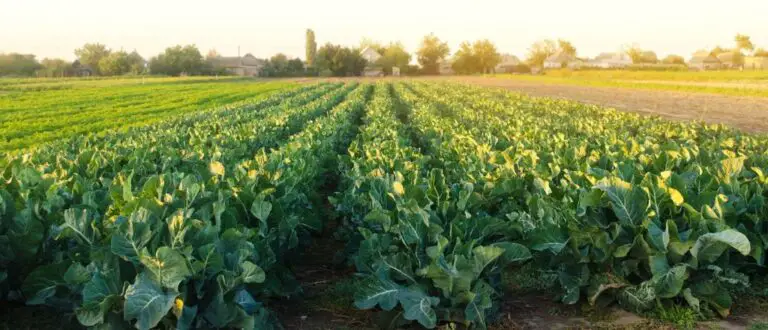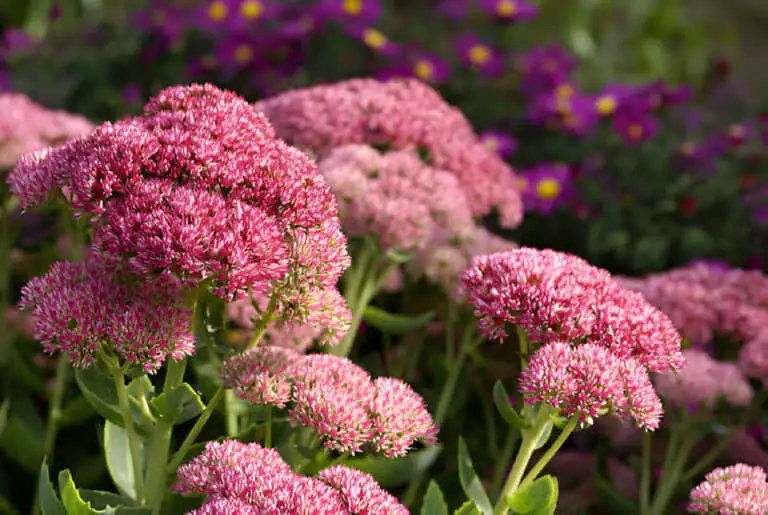What Is the Difference Between Arable and Pastoral Farming?

Farming is the practice of cultivating crops and raising animals for food, fiber, and other products. Agriculture has been a vital part of human civilization for thousands of years, and today, there are various types of farming practices. Two of the most common farming practices are arable and pastoral farming.
These practices might sound like they belong in a history book, but they are still prevalent today. Arable farming involves growing crops on cultivated land, while pastoral farming involves raising animals on natural or cultivated pastureland.
Both types of farming have benefits and drawbacks, and understanding the difference between them can help us make informed choices about our food and environmental stewardship.
In this article, we will explore the difference between these two types of farming. So, let’s explore the world of arable and pastoral farming and discover what makes them unique!
What Is Arable Farming?
Arable farming, also known as crop farming, is the practice of growing crops on cultivated land. The term “arable” comes from the Latin word “arabilis,” which means “fit for plowing.” In arable farming, the soil is plowed and tilled to prepare it for planting.
Then, seeds are sown into the soil and, with proper care, grow into crops that can be harvested for food, fiber, or other uses. The most common crops grown in arable farming include grains (e.g., wheat, corn, rice), vegetables (e.g., potatoes, carrots, onions), fruits (e.g., apples, oranges, grapes), and oilseeds (e.g., soybeans, canola, sunflower).
Arable farming is a common practice in areas with fertile soil, abundant water, and suitable climate conditions. This type of farming requires regular irrigation, fertilization, and pest control to maintain crop health and yield. Some of the most commonly grown crops in arable farming include wheat, corn, rice, soybeans, and cotton.
Arable farming has been a critical component of human agriculture for thousands of years. It is a vital source of food and other products for people all around the world.
However, arable farming can also have some negative impacts on the environment, such as soil degradation, water depletion, and pesticide pollution.
What Is Pastoral Farming?
Pastoral farming, also known as livestock farming, is the practice of raising animals for food, milk, or other products. The term “pastoral” comes from the Latin word “pastor,” which means “shepherd.” In pastoral farming, animals such as cattle, sheep, goats, pigs, and chickens are raised on natural or cultivated pastureland.
Pastoral farming is a common practice in areas with suitable climate conditions, grazing land, and water resources. This type of farming requires regular feeding, watering, and care to maintain the health and productivity of the animals. Pastoral farmers may also use some arable farming techniques, such as planting crops for animal feed or using fertilizers to improve pasture quality.
Pastoral farming has been a vital part of human agriculture for thousands of years. It provides a source of meat, milk, and other animal products for people all around the world. However, pastoral farming can also have some negative impacts on the environment, such as overgrazing, soil erosion, and water pollution.
Differences between Arable and Pastoral Farming
Arable farming and pastoral farming differ significantly in terms of their crops, livestock, techniques, advantages, and disadvantages. Some of the key differences are as follows:
Definition of the Key Differences
| Aspect | Arable farming | Pastoral farming |
| Primary focus | Crops | Livestock |
| Land use | Cultivated land | Natural grasslands or rangelands |
| Main products | Grains, vegetables, fruits, oilseeds | Meat, milk, wool |
| Techniques | Tilling, planting, irrigating, fertilizing, pest control | Grazing management, breeding, health monitoring, disease control |
| Environmental impact | Soil erosion, loss of biodiversity, dependence on synthetic fertilizers and pesticides | Overgrazing, soil compaction, water pollution |
| Economic impact | Higher yields, more diverse income sources | Lower yields, dependent on climate and market conditions |
| Social impact | Requires more labor, can support rural communities | Less labor-intensive, can lead to desertification and displacement |
Environmental Factors Affecting Farming
Environmental elements like climate, soil, water availability, and topography have a significant impact on both arable farming and pastoral farming. Arable farming requires suitable soil, water, and climate conditions to cultivate crops successfully. In contrast, pastoral farming requires natural grasslands or rangelands with adequate rainfall, temperature, and vegetation cover to support livestock grazing.
Economic Factors Affecting Farming
Arable farming and pastoral farming also differ in terms of their economic impact. Arable farming generally yields higher profits due to the diversity of crops grown and the ability to sell produce to multiple markets. Additionally, arable farmers can receive subsidies from the government to help offset the costs of production.
In contrast, pastoral farming is more dependent on market and climate conditions, which can lead to significant income variability. Livestock prices may fluctuate based on demand and other economic factors, making it difficult for pastoral farmers to predict income. Additionally, pastoral farmers may not have as many diverse income sources as arable farmers, which can lead to financial instability.
Social Factors Affecting Farming
Social factors such as labor, land ownership, and rural development can also have an impact on arable farming and pastoral farming. Arable farming generally requires more labor-intensive practices such as planting, harvesting, and weeding. This can provide job opportunities for rural communities and help support local economies. However, pastoral farming is generally less labor-intensive, which can lead to fewer employment opportunities.
Land ownership is another factor that can impact arable and pastoral farming. In some regions, land ownership is concentrated in the hands of a few large landowners, which can limit opportunities for small-scale farmers. In contrast, pastoral farming often involves communal land ownership, which allows for greater access to land for small-scale farmers.
Advantages and Disadvantages of Arable and Pastoral Farming
| Aspect | Arable farming | Pastoral farming |
| Advantages | Higher yields, diverse income sources, can support rural communities | Can maintain balance between animals and the environment, can produce high-quality animal products |
| Disadvantages | Risk of soil erosion, loss of biodiversity, dependence on synthetic fertilizers and pesticides | Risk of overgrazing, soil compaction, water pollution |
Arable farming and pastoral farming have different advantages and disadvantages. Arable farming has higher yields and more diverse income sources than pastoral farming. Additionally, arable farming can support rural communities by providing job opportunities. However, arable farming has the disadvantage of relying on synthetic fertilizers and pesticides, which can damage the environment.
How Does Climate Change Affect Arable and Pastoral Farming?
Climate change is one of the most pressing issues of our time, and it has far-reaching impacts on various aspects of our lives, including agriculture. Climate change has an impact on both pastoral and arable farming, albeit in different ways.
Arable farming, which involves growing crops on cultivated land, is sensitive to changes in temperature, precipitation, and soil moisture. These factors affect the growth and yield of crops, as well as the occurrence of pests and diseases.
In some regions, climate change has led to more frequent and severe droughts, floods, and heatwaves, which can reduce crop productivity and threaten food security.
On the other hand, changes in the quality and availability of natural pastures, which serve as the main source of feed for grazing animals, have an impact on pastoral farming.
Climate change can alter the timing, duration, and intensity of rainfall and snowmelt, which can affect the growth and distribution of vegetation. For example, in some regions, prolonged droughts or erratic rainfall patterns can lead to the depletion of natural pastures and force pastoralists to migrate or sell their livestock. In other regions, climate change can lead to the encroachment of invasive species or the emergence of new pests and diseases that affect the health and productivity of livestock.
Moreover, climate change can affect the socio-economic and cultural aspects of arable and pastoral farming. For instance, changes in temperature and precipitation patterns can alter the suitability of certain crops or livestock breeds, which can affect the traditional knowledge and practices of farmers and pastoralists. Climate change can also affect the availability and accessibility of markets, credit, and insurance, which are crucial for the livelihoods of rural communities.
To mitigate the impacts of climate change on arable and pastoral farming, farmers and pastoralists need to adopt sustainable and resilient practices. For instance, arable farmers can use crop varieties that are adapted to changing climatic conditions, implement water-saving techniques, and adopt conservation agriculture practices that improve soil health and reduce greenhouse gas emissions.
Pastoralists can use mobile herding strategies that allow them to access different grazing areas, practice rotational grazing that allows pastures to recover, and diversify their livelihoods to reduce their dependence on livestock alone.
Conclusion
In conclusion, arable and pastoral farming are two types of agriculture that differ in various ways. Arable farming is the practice of growing crops on cultivated land, while pastoral farming is the rearing of livestock on grazing land. Both farming methods have advantages and disadvantages, and the choice of which method to use depends on various factors, including environmental, economic, and social factors.
Despite their differences, both arable and pastoral farming are essential to meet the food demands of the growing population. It is important to strike a balance between these farming methods to ensure sustainable agriculture, which is crucial for the survival of humanity.






